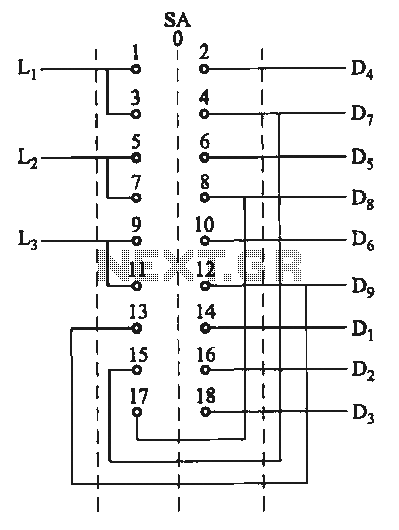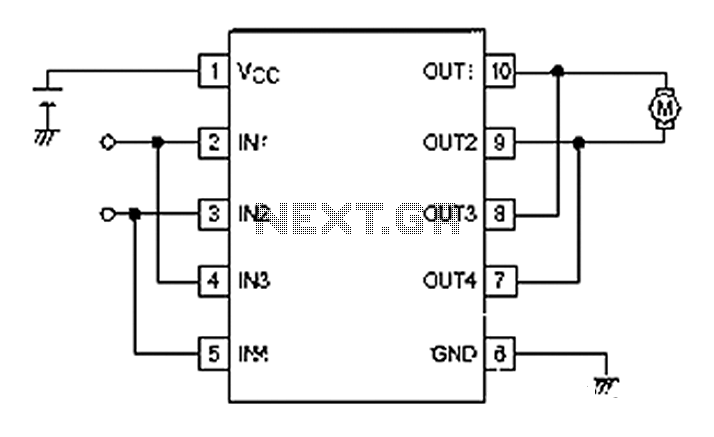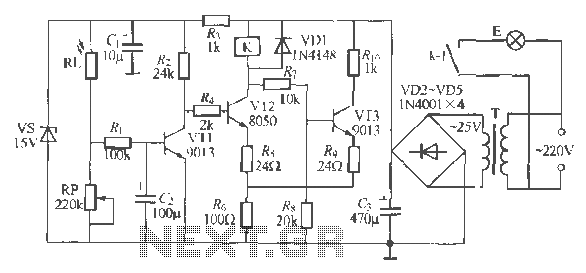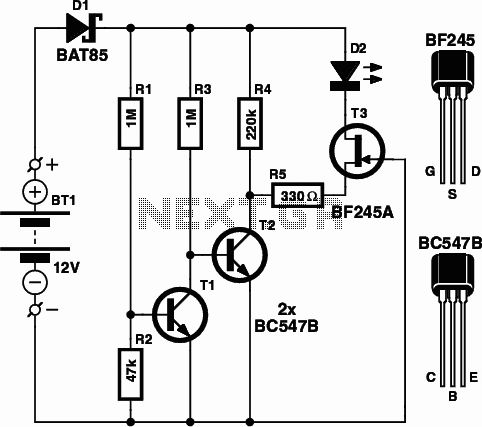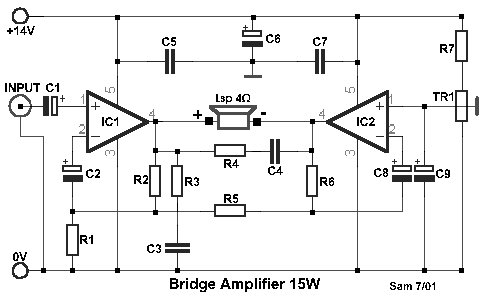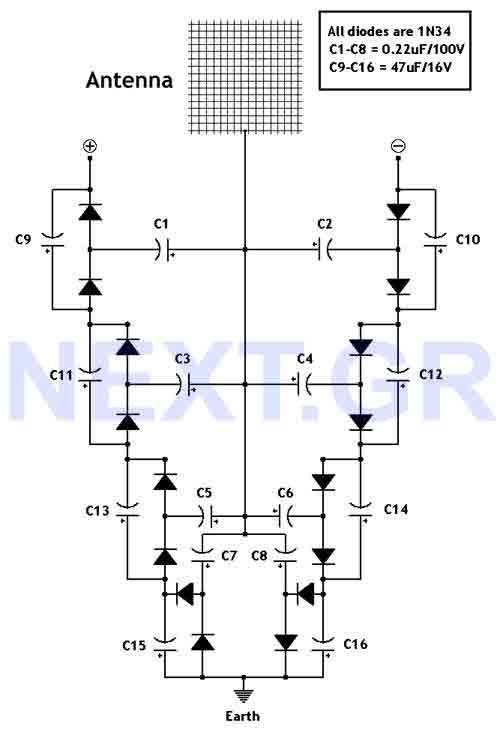
Simplified circuit bass attenuation
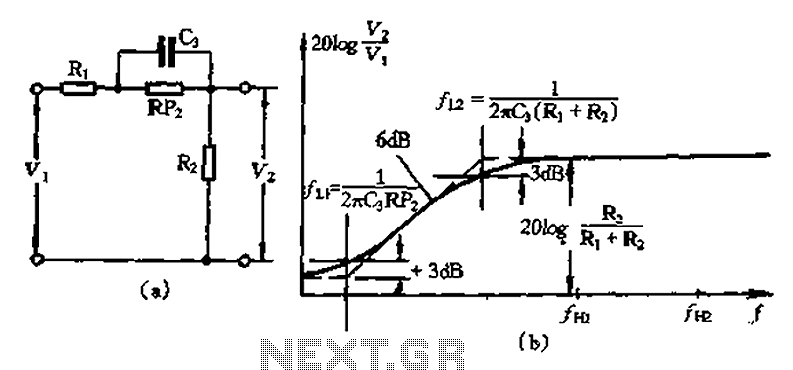
There are two corner frequencies present: the start frequency attenuation transition is defined by several parameters, including F1/27rC3 (Ri + R2). This is followed by a decay into a flat corner frequency, denoted as LI, which is represented by l/2rTC3. Additionally, RP2 illustrates the lifting of the attack, treble attenuation, and bass enhancement characteristics. The bass frequency attenuation characteristic curve is depicted in four extreme cases, which together form the overall characteristic curve shown in Figure 1-63.
The circuit under discussion involves a frequency response that is defined by two critical corner frequencies. The first corner frequency is determined by the formula F1/27rC3, where C3 is a capacitor and Ri and R2 are resistors that influence the circuit's impedance. This frequency marks the point where the attenuation begins, transitioning from a high to a lower level as frequency increases. The decay into a flat corner frequency, represented by LI and described by the equation l/2rTC3, indicates the point at which the circuit stabilizes, providing a consistent output level across a range of frequencies.
In addition to the corner frequencies, the circuit features an attack lift denoted as RP2, which affects the initial response of the circuit to incoming signals. This is particularly relevant in audio applications, where the sharpness of the attack can significantly influence the perceived quality of sound. The circuit also includes treble attenuation, which reduces higher frequency signals to prevent harshness in the audio output, and bass enhancement, which boosts low-frequency signals for a fuller sound experience.
The characteristic curve of the bass frequency attenuation is analyzed under four extreme cases, which represent different configurations or settings of the circuit components. These cases collectively illustrate the overall frequency response of the circuit, as shown in Figure 1-63. The comprehensive understanding of these parameters and their interactions is crucial for optimizing the performance of audio equipment or any application that relies on precise frequency manipulation. As shown, there are two corner frequency: Start frequency attenuation transition of several children F 1/27rC3 (Ri + R2); by the decay into a flat corner frequency, LI. l/2rTC3 RP2. The lifting of the attack, treble attenuation, bass enhance bass frequency attenuation characteristic curve four extreme cases combined, they constitute shown in Figure 1-63 overall characteristic curve.
The circuit under discussion involves a frequency response that is defined by two critical corner frequencies. The first corner frequency is determined by the formula F1/27rC3, where C3 is a capacitor and Ri and R2 are resistors that influence the circuit's impedance. This frequency marks the point where the attenuation begins, transitioning from a high to a lower level as frequency increases. The decay into a flat corner frequency, represented by LI and described by the equation l/2rTC3, indicates the point at which the circuit stabilizes, providing a consistent output level across a range of frequencies.
In addition to the corner frequencies, the circuit features an attack lift denoted as RP2, which affects the initial response of the circuit to incoming signals. This is particularly relevant in audio applications, where the sharpness of the attack can significantly influence the perceived quality of sound. The circuit also includes treble attenuation, which reduces higher frequency signals to prevent harshness in the audio output, and bass enhancement, which boosts low-frequency signals for a fuller sound experience.
The characteristic curve of the bass frequency attenuation is analyzed under four extreme cases, which represent different configurations or settings of the circuit components. These cases collectively illustrate the overall frequency response of the circuit, as shown in Figure 1-63. The comprehensive understanding of these parameters and their interactions is crucial for optimizing the performance of audio equipment or any application that relies on precise frequency manipulation. As shown, there are two corner frequency: Start frequency attenuation transition of several children F 1/27rC3 (Ri + R2); by the decay into a flat corner frequency, LI. l/2rTC3 RP2. The lifting of the attack, treble attenuation, bass enhance bass frequency attenuation characteristic curve four extreme cases combined, they constitute shown in Figure 1-63 overall characteristic curve.
